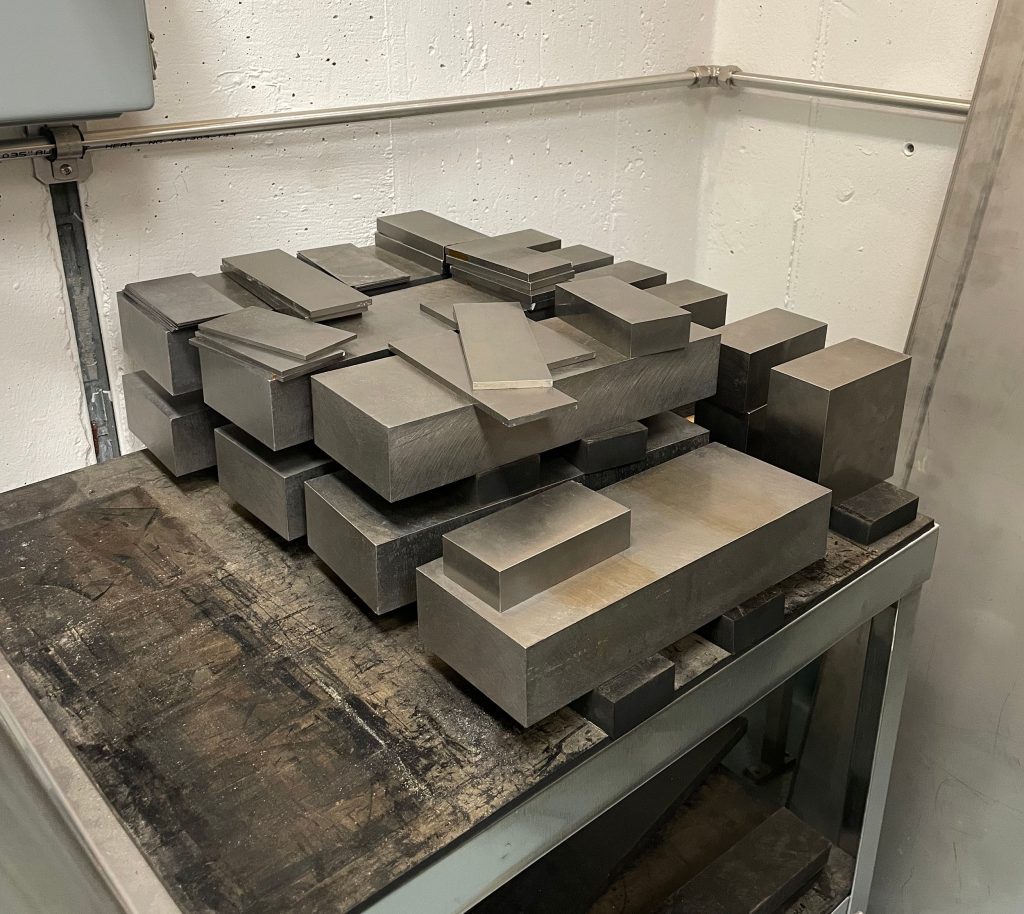Adjustable Tungsten Collimator
An adjustable tungsten-based heavy metal collimator is available for use at any location on the beam line. The horizontal and vertical axes can be positioned independently and can each be adjusted between entirely closed or fully retracted out of the beam.
The collimator is constructed out of a set of four 4-inch (10.16 cm) wide, 1-inch (2.54 cm) thick tungsten alloy plates on each side for each axis that interleave to permit their independent adjustment. As such the collimator provides at least 4 inches (10.16 cm) total thickness of tungsten. This thickness is doubled to 8 inches (20.32 cm) of tungsten in the areas where the horizontal and vertical plates interleave.
Each set of tungsten plates moves symmetrically about the center axis of the beam. A specific location of a sample is targeted by moving the entire sample with respect to the beam, most often by using the translation stages.
The 20x speed video below shows the adjustable tungsten collimator being operated.
Tungsten Shielding Blocks
For some applications, we can make use of tungsten alloy collimator blocks to shape the radiation field. There are a variety of sizes and thicknesses that can be stacked to produce beam spots and shielded areas which would otherwise be in the path of the beam. The photograph below shows a a collection of blocks available for use. The largest blocks are 12×4×2 inches3 (30.5×10.2×5.1 cm3).

Other Collimators
For certain applications, pre-assembled static-shape collimators made from layers of PMMA, aluminum, and polyethylene are also available. These collimators have precision holes that allow the beam to pass through in selected regions. The holes are typically 5 mm to 1 cm in diameter and can be square or round. The make-up of the collimator is optimized to stop the beam without producing many penetrating fragments. The PMMA is the first stage with a thickness of 85 mm. Aluminum is the second stage of 75 mm thickness. The final stage is polyethylene which is 90 mm thick.
When using the layered collimators, it is best to start with heavy ion beams of relatively lower energy, such as 600 MeV/u iron beams. In this way the leakage dose, or dose in the regions covered by the collimator can be kept below about 3% of the dose in the holes. At higher beam energies, the leakage will be greater.
This page was last modified:




